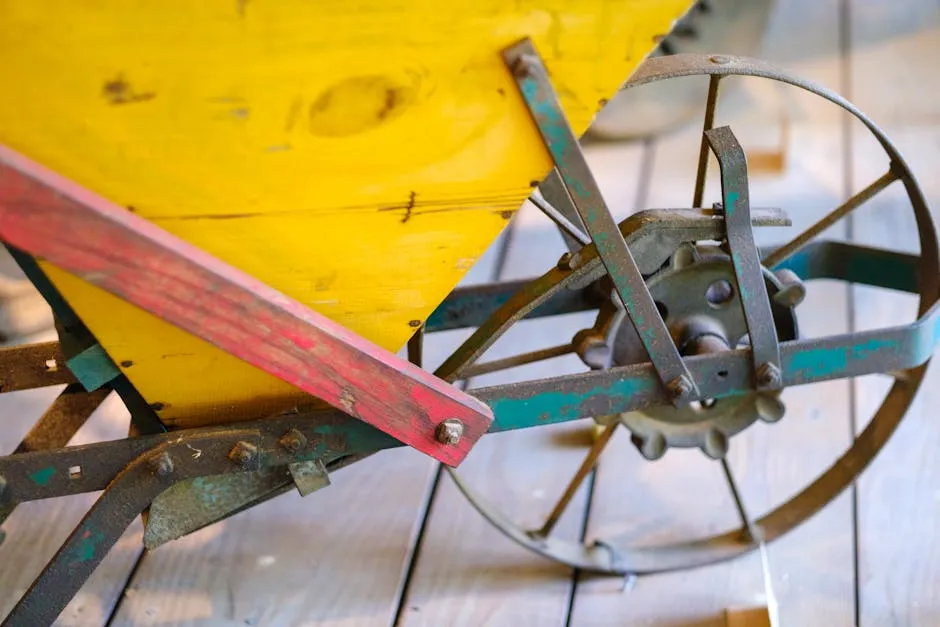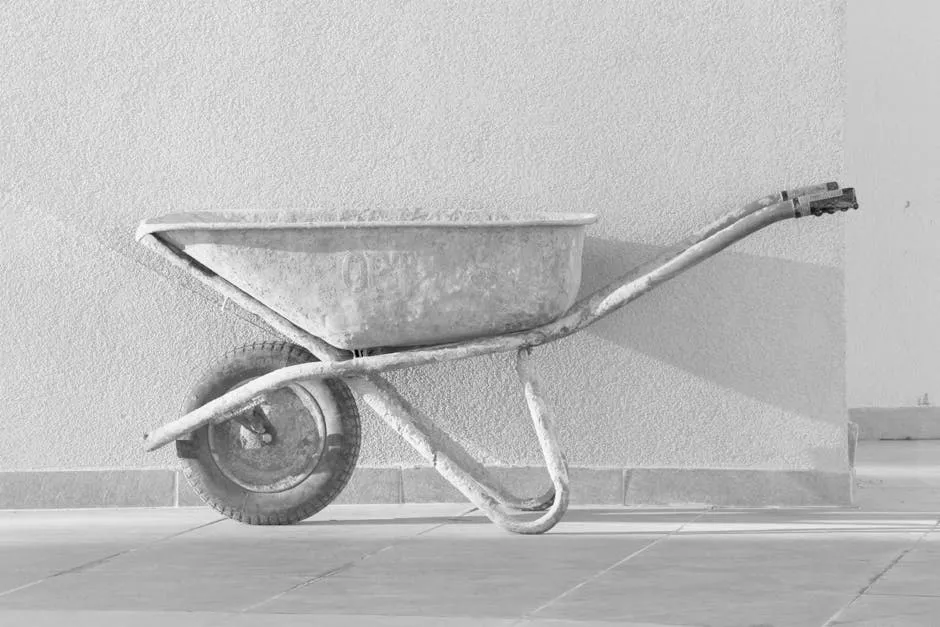

The Ultimate Guide to Wheelbarrows: Types, Uses, and Buying Tips
Introduction
Have you ever struggled to move heavy loads in your garden or on a construction site? A wheelbarrow is your solution! This handy tool makes transporting materials easy and efficient. Whether you’re gardening, building, or doing yard work, wheelbarrows are versatile helpers. In this article, we’ll cover the different types of wheelbarrows, their uses, and tips for choosing the perfect one for your needs.
Speaking of handy tools, have you checked out the Juskys Wheelbarrow? Perfect for all your heavy lifting needs, this wheelbarrow combines strength with ease of use, making it a great addition to your gardening arsenal!
Summary and Overview
Wheelbarrows have a rich history, dating back to ancient times. They originated in China around the second-century Han dynasty. Back then, they were simple one-wheeled carts. Over centuries, their designs evolved, leading to modern styles we see today. Wheelbarrows are essential in many industries, including construction, landscaping, and agriculture. They help transport everything from soil to bricks.
In this guide, we’ll explore various types of wheelbarrows, their key features, maintenance tips, and buying advice. Whether you’re a gardening enthusiast or a construction worker, this guide will help you make an informed decision.
For those who love a little extra oomph in their gardening, the Gorilla Carts GOR4PS Garden Cart is a fantastic choice. It boasts a heavy-duty frame and a maximum load capacity that will make your neighbors green with envy!

Types of Wheelbarrows
Traditional Wheelbarrows
Traditional wheelbarrows feature a classic design with a single wheel at the front. This design allows for easy maneuverability, especially in tight spaces. They often have two handles at the rear for stability and control. The advantages include their lightweight nature and ability to navigate rough terrain. These wheelbarrows are perfect for gardening tasks, like moving soil, mulch, or plants. Additionally, they’re widely used in construction for carrying bricks and concrete.
If you’re looking for a robust traditional option, check out the Gardebruk Wheelbarrow. It’s designed to support heavy loads while still being easy to navigate, making it perfect for any garden warrior!

Two-Wheel Wheelbarrows
Two-wheel wheelbarrows offer stability that one-wheeled versions can’t. With two wheels, they distribute weight evenly, making them ideal for heavier loads. This design makes it easier to balance and transport bulkier items. You can push or pull them without worrying about tipping. They are perfect for transporting larger materials, such as gravel or firewood. Compared to traditional wheelbarrows, two-wheel models are often easier to handle, especially for beginners.
For a great two-wheel option, consider the Rubbermaid Commercial Products Heavy-Duty Wheelbarrow. It’s built tough and ready to take on any heavy lifting you throw its way!

Electric and Power-Assisted Wheelbarrows
Modern technology has transformed wheelbarrows into electric and power-assisted versions. These innovations make heavy-duty tasks much easier. Imagine tackling big jobs without breaking a sweat! Electric wheelbarrows can carry substantial loads with minimal effort. They save you time and energy, especially when moving heavy materials like soil or bricks.
However, these advanced models come with considerations. The initial cost can be higher than traditional options. Plus, maintenance requires attention to the battery and motor. Regular check-ups ensure they operate smoothly. Weigh the benefits against these costs to see if they’re right for you.
One excellent electric option is the EGO Power+ 21-Inch Electric Wheelbarrow. It’s a game changer for those who need to move heavy loads without the hassle!
Specialty Wheelbarrows
Specialty wheelbarrows cater to specific needs, making them unique. For instance, children’s wheelbarrows are smaller and lighter, designed for young gardeners. They often feature bright colors and fun designs, encouraging kids to help out.
Agricultural wheelbarrows are another type. These models are built for durability and can handle heavy loads of crops or soil. They often include larger trays and reinforced frames. Popular examples include the Winther Mini Wheelbarrow for Kids and sturdy models used in farms.

Key Features to Consider
Load Capacity
Understanding load capacity is crucial when choosing a wheelbarrow. Each type has a maximum weight limit. Standard models typically carry around 100-250 kg. Heavy-duty wheelbarrows can handle even more, often exceeding 300 kg. Knowing this helps you avoid overloading and damaging your tool.
Material and Durability
Wheelbarrows come in various materials, including metal, plastic, and wood. Metal models are sturdy but can rust over time. Plastic options are lightweight and resistant to weather but may not be as durable. Wooden wheelbarrows offer a classic look but require more upkeep. Each material has pros and cons, so consider your specific needs for longevity and maintenance.
For those looking for a durable choice, the DEWALT DWHT08002 6 cu. ft. Heavy Duty Wheelbarrow is a fantastic investment. Its sturdy construction ensures it will last through all your heavy lifting tasks!
Wheel Type
When choosing a wheelbarrow, consider the wheel type. Wheelbarrows typically come with either pneumatic or solid wheels.
Pneumatic wheels are air-filled and provide a cushioned ride. They can handle rough terrain better, making them ideal for uneven surfaces. However, they require regular air checks to maintain pressure. A flat tire can halt your work.
On the other hand, solid wheels are puncture-proof. They offer less cushioning but are more durable in tough conditions. If you work primarily on flat surfaces, solid wheels may be the better option.
The right wheel type impacts your wheelbarrow’s performance. If you plan to use it in gardens, pneumatic wheels excel. For construction sites, solid wheels could be more suitable.
Handle Design
Handle design plays a crucial role in user comfort. Ergonomic handles can significantly reduce strain on your back and arms. This feature is essential, especially during long tasks.
You’ll find various handle types, including straight, curved, and adjustable options. Curved handles allow for better leverage when lifting heavy loads. Adjustable handles can accommodate users of different heights, making them versatile.
Choosing the right handle design enhances your wheelbarrow experience. Comfort and ease of use should always be top priorities.
Maintenance Tips for Wheelbarrows
Cleaning and Care
Proper cleaning extends the life of your wheelbarrow. For metal models, wipe down surfaces with a damp cloth after use. This prevents rust and corrosion. Plastic wheelbarrows can be cleaned with soap and water.
For wooden models, use a wood-safe cleaner. Always dry thoroughly to avoid moisture damage. Regular maintenance checks can help spot issues early.

Tire Maintenance
Regular tire maintenance is vital for safe operation. Check tire pressure frequently, especially for pneumatic wheels. The ideal pressure ensures optimal performance and prevents flats.
Replacing wheels is straightforward. If you notice excessive wear or damage, it’s time for a change. Many retailers offer replacement wheels that fit various models.

Storage Solutions
Storing your wheelbarrow correctly prevents damage. Keep it in a dry, sheltered area when not in use. This protects it from weather elements.
For winter storage, consider hanging it on a wall to save space. Avoid leaving it outdoors, as exposure can lead to rust or degradation.
By following these maintenance tips, your wheelbarrow will serve you well for years to come. Regular care ensures it remains functional and ready for any task.

Buying Guide: How to Choose the Right Wheelbarrow
Assessing Your Needs
Choosing the right wheelbarrow starts with understanding your needs. Ask yourself how often you’ll use it. Is it for weekend gardening or daily construction tasks? Consider the types of materials you’ll transport. Will it be soil, bricks, or firewood?Learn more about wheelbarrows here.
Evaluating size and capacity is also crucial. A larger wheelbarrow can hold more but may be harder to maneuver. On the other hand, a smaller model might be easier to handle but can limit your load. Balancing these factors will help you make a smart choice.

Budget Considerations
Next, let’s talk about money. Wheelbarrows come in various price ranges. Basic models can start around €30, while electric or specialty ones can exceed €200.
When choosing, weigh value against cost. A higher price might mean better durability or features. However, if you only need it for light tasks, a budget model may suffice. Assess your unique needs to find the best fit without overspending.
Where to Buy
Now that you know what you need, where should you buy? You have options! Online retailers often offer a wide selection and competitive prices. Websites like Amazon or specialized gardening stores typically have good deals.
Local hardware stores provide the advantage of seeing the product in person. You can test its weight and comfort.
Popular brands like Engelbert Strauss, Ames 5 cu. ft. Poly Wheelbarrow, and Sun Joe SJ-WB22 22-Inch Steel Wheelbarrow offer reliable models. Research reviews to find the best fit for your tasks. Whether online or in-store, ensure you choose a trusted source for your purchase.

Conclusion
In summary, wheelbarrows come in various types to suit different tasks. Traditional models are perfect for gardening, while two-wheel options offer more stability for heavier loads. Electric wheelbarrows make heavy-duty jobs easier, saving time and energy. Always consider materials and load capacity when choosing. Regular maintenance, like cleaning and checking tires, ensures longevity.
When selecting a wheelbarrow, think about your specific needs. Will you use it for light garden work or heavier construction tasks? Making the right choice can enhance your efficiency and enjoyment of outdoor projects.

FAQs
What is the best type of wheelbarrow for gardening?
For gardening, look for a lightweight model with a single wheel. This design provides better maneuverability in tight spaces. A pneumatic wheel offers a smooth ride, making it easier to navigate uneven terrain.
How much weight can a standard wheelbarrow hold?
Typical load capacities range from 100 to 250 kg. Heavy-duty models can carry over 300 kg. Always check the specifications to avoid overloading.
What materials are wheelbarrows made from?
Common materials include metal, plastic, and wood. Metal is durable but can rust. Plastic is lightweight and weather-resistant, while wood offers a classic look but needs more maintenance.
How do I maintain my wheelbarrow?
Clean it regularly to prevent rust and damage. Check the tire pressure often, especially for pneumatic wheels. Store it in a dry place to extend its lifespan.
Can I use a wheelbarrow on uneven terrain?
Yes, but choose models with pneumatic wheels for better performance. Solid wheels are more durable but may struggle on rough surfaces.
Where can I buy a wheelbarrow?
You can find wheelbarrows at local hardware stores or online retailers like Amazon. Check customer reviews to find the best options.
Are electric wheelbarrows worth the investment?
Electric wheelbarrows are great for heavy-duty tasks. They save time and reduce physical strain. However, they come with a higher upfront cost and require battery maintenance. Consider your typical usage to decide.
Please let us know what you think about our content by leaving a comment down below!
Thank you for reading till here 🙂
All images from Pexels



